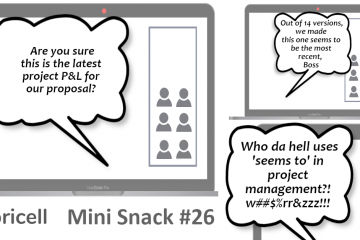
Project Delivery Professional Services Business
As with any business owners of the company delivering projects have to define what is the value of their business model at least at the beginning.
As they grow the value can come from many elements of their business, like
- Market position and customer references,
- Industry knowledge and expertise,
- Consultants and professionals, they employ,
- Methods and tools or other specific IP they use.
There are more items than the list above. And it is good to play on as many elements as possible to build up value. As the competition will do so.
There is another area that plays a role, maybe not direct, but is quite important in this ‘value sauce’.
It is a type of project a company delivers.
The things here are not so straightforward as it seems. Depending on company market maturity certain projects may add or be a risk to general business.
In principle, there are three types of the project delivered while two are dominating.
These are:
- Staff Augmentation – this is purely providing skills capacity. This also means there is no scope responsibility and billing is done monthly based on spend time of consultants
- Fixed Price Projects – in principle this means there is a scope responsibility for the supplier and billing is done based on milestones and project achievements.
- Time and Material Scope projects – this is a mixture where there is a scope responsibility, but billing is done monthly based on time spent. Everybody will agree they are the riskiest ones and Yes these projects are not popular but they are happening from time to time. We will not talk about them over here.
Let us see what type of companies prefer what model and why.
Staff Augmentation
So, who is happy and who is not, using this delivery model?
Those projects a very popular model of delivering business.
Why?. because it is easy to implement on the supplier side and customer side.
For starting businesses, it is very convenient to start right away and skip all the burdens of defining and negotiating scope. The billability starts right at the beginning and it is easy to plan business.
It works on the other side as well for the same reason. The supplier can start work as soon as possible w/o major scope discussions and the contracting process.
But for starting businesses it may not be that easy to propose. As other values sauce are not yet well established, going for staff augmentation may mean competing on rates.
" If you are becoming the only body leasing supplier, you are helping to overcome a headcount ban of the customer company but losing expert value "
The middle-tier companies may benefit from proposing staff augmentation projects the same way as beginners. It is nice fast utilization and easy model to balance cash flow.
But there is a trap. For those companies, this mainly means competing on rates and “names”. If the competition somehow hijacks the main ‘names’ from you, you don’t have anymore that arguments to win more business.
The other thing is you are becoming body leasing and this is denominating your value as an expert company. You simply helping to organize an efficient way to overcome the headcount ban of the customer company.
Some companies consciously select this model, but sooner or later they are becoming convenient HR partner than an expert partner.
Interestingly enough this model may be quite profitable for very well-established suppliers. If the company is a leader in the market it can easily overcome all cons and benefit from this model.
I have seen situations where proposed rates for consultants were not very attractive (meaning competitive) for the customer, but the reputation of the supplier and its market power was a good argument to pay premium rates.
Fixed Price Projects
Fix Priced projects are considered much riskier but potentially more profitable.
Who is a happy user of this model?
Starting businesses is rarely using this model as this is not convenient for cash flow. And cash flow for young project delivery professional services is everything.
But sometimes to get new business companies needs to offer on fixed price to be even considered.
This obviously is a very big risk in making sure the estimates are done correctly.
Making the right estimates and validating it takes time, which means requires non-billable pre-sales effort, and this way the whole business model is struggling.
Well-established companies, but not necessarily market leaders are the most common users of this model.
They have enough expertise to provide quality estimations and manage successful delivery.
The big value for them is a no need to compete on cost rates and getting higher marge on project price. This is a huge advantage.
Well-established companies can benefit from the model as well as similarly, they can provide a premium price (and profit) for the project.
Their brand is a good enough low-risk decision point for customers. It does not mean the delivery can not struggle.
Final Conclusion
The decision on what model we offer the projects is not so obvious and often not dependent on us. It changes as the company establishes its value on the market.
The ultimate market position of the supplier is when they can decide what model they use for what case to maximize a value for themselves and customers.
Healthy ‘value sauce’ allows to use of both models and both models mix is a healthy value sauce.
Many companies within their strategy decide to change the profile of the projects or at least change the mix one way or another.
In both models important is to properly calculate cost and price. This is where automation tools help here, including pricell.io.



